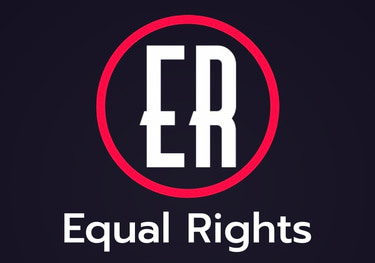Legal Frameworks for Climate Justice:
Case Studies and Best Practices
Kylo B
6/14/2024
Legal Frameworks for Climate Justice: Case Studies and Best Practices
Climate justice seeks to address the disproportionate impacts of climate change on vulnerable communities, ensuring that those who contribute least to the problem are not unfairly burdened by its consequences.
Legal frameworks play a critical role in advancing climate justice by creating policies and strategies that protect these communities.
This article explores successful legal frameworks and case studies that have advanced climate justice, highlighting best practices for protecting vulnerable populations.
Understanding Climate Justice
Definition and Principles
Climate justice is rooted in the recognition that climate change impacts are not evenly distributed. Vulnerable communities, often marginalized by socio-economic factors, bear the brunt of environmental degradation, despite contributing the least to greenhouse gas emissions. Key principles of climate justice include:
Equity: Ensuring fair distribution of the benefits and burdens of climate actions.
Human Rights: Protecting the rights of those most affected by climate change.
Participation: Involving vulnerable communities in decision-making processes.
Case Studies of Successful Legal Strategies
The Urgenda Foundation v. The Netherlands
Overview
In 2015, the Urgenda Foundation, alongside 900 Dutch citizens, sued the Dutch government for failing to take adequate action against climate change. The plaintiffs argued that the government's inaction violated their human rights under Dutch law and international human rights treaties.
Outcome
The court ruled in favor of Urgenda, ordering the Dutch government to reduce greenhouse gas emissions by at least 25% by 2020 compared to 1990 levels. This landmark case set a precedent for holding governments accountable for their climate policies based on human rights principles.
Best Practices
Human Rights Framework: Using human rights as a basis for climate litigation can compel governments to take more aggressive climate action.
Public Mobilization: Involving citizens in legal actions can amplify the impact and public support for climate justice cases.
Juliana v. United States
Overview
In 2015, a group of young plaintiffs filed a lawsuit against the U.S. government, claiming that its failure to address climate change violated their constitutional rights to life, liberty, and property. The case, known as Juliana v. United States, aimed to compel the government to implement a science-based climate recovery plan.
Outcome
Although the case faced numerous legal challenges and was ultimately dismissed on procedural grounds in 2020, it highlighted the role of youth in climate litigation and brought significant public attention to the issue of climate justice in the United States.
Best Practices
Youth Involvement: Engaging younger generations in climate litigation underscores the long-term impacts of climate inaction and garners public and media attention.
Constitutional Arguments: Framing climate change as a violation of constitutional rights can provide a powerful legal basis for action.
Leghari v. Federation of Pakistan
Overview
In 2015, Pakistani farmer Ashgar Leghari filed a petition against the Pakistani government for failing to implement its climate change policy. Leghari argued that the government's inaction threatened his livelihood and violated his fundamental rights.
Outcome
The court ruled in favor of Leghari, recognizing climate change as a significant threat to fundamental rights and ordering the government to implement its climate policies. This case demonstrated the potential for climate litigation in developing countries.
Best Practices
Policy Implementation: Courts can play a crucial role in ensuring governments follow through on their climate commitments.
Linking Livelihoods and Climate: Demonstrating how climate inaction directly affects livelihoods can strengthen legal arguments for climate justice.
Best Practices for Legal Frameworks Advancing Climate Justice
Integrating Human Rights into Climate Policies
Legal frameworks that explicitly incorporate human rights principles can provide robust protections for vulnerable communities. Examples include:
Rights-Based Approach: Ensuring that climate policies protect the rights to health, housing, and a safe environment.
International Treaties: Leveraging international human rights treaties to hold governments accountable for climate action.
Community Participation and Empowerment
Inclusive decision-making processes that involve affected communities can lead to more equitable and effective climate policies. Strategies include:
Consultation and Consent: Ensuring that communities have a say in climate policies that affect them, particularly Indigenous peoples.
Capacity Building: Providing resources and support to empower communities to participate in climate governance.
Strong Legal Mechanisms and Enforcement
Effective legal frameworks require robust mechanisms for enforcement and accountability. Best practices include:
Clear Targets and Timelines: Setting legally binding emission reduction targets and deadlines.
Independent Oversight: Establishing independent bodies to monitor and enforce climate policies.
Access to Justice: Ensuring that individuals and communities can access legal remedies for climate-related harms.
International Cooperation and Support
Climate justice requires coordinated efforts at the global level, particularly in supporting developing countries. Key approaches include:
Climate Finance: Providing financial support to vulnerable countries for adaptation and mitigation efforts.
Technology Transfer: Sharing technologies and knowledge to help developing countries build resilience to climate impacts.
Advancing climate justice through legal frameworks is essential for protecting vulnerable communities and ensuring a fair response to climate change. By examining successful case studies and best practices, we can identify effective strategies for integrating human rights into climate policies, empowering communities, and holding governments accountable. As the impacts of climate change continue to grow, robust legal frameworks will be crucial in achieving a just and equitable transition to a sustainable future.
